Similar presentations:
Elasticity and its applications. The elasticity of demand
1. 5
Elasticity and ItsApplications
Copyright © 2004 South-Western
5
2. Elasticity . . .
• … allows us to analyze supply and demandwith greater precision.
• … is a measure of how much buyers and sellers
respond to changes in market conditions
Copyright © 2004 South-Western/Thomson Learning
3. THE ELASTICITY OF DEMAND
• Price elasticity of demand is a measure of howmuch the quantity demanded of a good
responds to a change in the price of that good.
• Price elasticity of demand is the percentage
change in quantity demanded given a percent
change in the price.
Copyright © 2004 South-Western/Thomson Learning
4. The Price Elasticity of Demand and Its Determinants
Availability of Close Substitutes
Necessities versus Luxuries
Definition of the Market
Time Horizon
Copyright © 2004 South-Western/Thomson Learning
5. The Price Elasticity of Demand and Its Determinants
• Demand tends to be more elastic :the larger the number of close substitutes.
if the good is a luxury.
the more narrowly defined the market.
the longer the time period.
Copyright © 2004 South-Western/Thomson Learning
6. Computing the Price Elasticity of Demand
• The price elasticity of demand is computed asthe percentage change in the quantity
demanded divided by the percentage change in
price.
P ric e e la s tic ity o f d e m a n d =
P e rc e n ta g e c h a n g e in q u a n tity d e m a n d e d
P e rc e n ta g e c h a n g e in p ric e
Copyright © 2004 South-Western/Thomson Learning
7. Computing the Price Elasticity of Demand
P ric e e la s tic ity o f d e m a n d =P e rc e n ta g e c h a n g e in q u a n tity d e m a n d e d
P e rc e n ta g e c h a n g e in p ric e
• Example: If the price of an ice cream cone
increases from $2.00 to $2.20 and the amount
you buy falls from 10 to 8 cones, then your
elasticity of demand would be calculated as:
(1 0 8 )
100
20%
10
2
( 2 .2 0 2 .0 0 )
100 10%
2 .0 0
Copyright © 2004 South-Western/Thomson Learning
8. The Midpoint Method: A Better Way to Calculate Percentage Changes and Elasticities
• The midpoint formula is preferable whencalculating the price elasticity of demand
because it gives the same answer regardless of
the direction of the change.
(Q 2 Q 1) / [(Q 2 Q 1) / 2 ]
P ric e e la s tic ity o f d e m a n d =
(P 2 P 1 ) / [(P 2 P 1 ) / 2 ]
Copyright © 2004 South-Western/Thomson Learning
9. The Midpoint Method: A Better Way to Calculate Percentage Changes and Elasticities
• Example: If the price of an ice cream coneincreases from $2.00 to $2.20 and the amount
you buy falls from 10 to 8 cones, then your
elasticity of demand, using the midpoint
formula, would be calculated as:
(1 0 8 )
22%
(1 0 8 ) / 2
2 .3 2
( 2 .2 0 2 .0 0 )
9 .5 %
( 2 .0 0 2 .2 0 ) / 2
Copyright © 2004 South-Western/Thomson Learning
10. The Variety of Demand Curves
• Inelastic Demand• Quantity demanded does not respond strongly to
price changes.
• Price elasticity of demand is less than one.
• Elastic Demand
• Quantity demanded responds strongly to changes in
price.
• Price elasticity of demand is greater than one.
Copyright © 2004 South-Western/Thomson Learning
11. Computing the Price Elasticity of Demand
(100 - 50)ED
Price
$5
4
0
(4.00 5.00)/2
67 percent
3
22 percent
Demand
50
(5.00 - 4.00)
(100 50)/2
100 Quantity
Demand is price elastic
Copyright © 2004 South-Western/Thomson Learning
12. The Variety of Demand Curves
• Perfectly Inelastic• Quantity demanded does not respond to price
changes.
• Perfectly Elastic
• Quantity demanded changes infinitely with any
change in price.
• Unit Elastic
• Quantity demanded changes by the same percentage
as the price.
Copyright © 2004 South-Western/Thomson Learning
13. The Variety of Demand Curves
• Because the price elasticity of demandmeasures how much quantity demanded
responds to the price, it is closely related to the
slope of the demand curve.
Copyright © 2004 South-Western/Thomson Learning
14. Figure 1 The Price Elasticity of Demand
(a) Perfectly Inelastic Demand: Elasticity Equals 0Price
Demand
$5
4
1. An
increase
in price . . .
0
100
Quantity
2. . . . leaves the quantity demanded unchanged.
Copyright©2003 Southwestern/Thomson Learning
15. Figure 1 The Price Elasticity of Demand
(b) Inelastic Demand: Elasticity Is Less Than 1Price
$5
4
1. A 22%
increase
in price . . .
Demand
0
90
100
Quantity
2. . . . leads to an 11% decrease in quantity demanded.
16. Figure 1 The Price Elasticity of Demand
(c) Unit Elastic Demand: Elasticity Equals 1Price
$5
4
Demand
1. A 22%
increase
in price . . .
0
80
100
Quantity
2. . . . leads to a 22% decrease in quantity demanded.
Copyright©2003 Southwestern/Thomson Learning
17. Figure 1 The Price Elasticity of Demand
(d) Elastic Demand: Elasticity Is Greater Than 1Price
$5
4
Demand
1. A 22%
increase
in price . . .
0
50
100
Quantity
2. . . . leads to a 67% decrease in quantity demanded.
18. Figure 1 The Price Elasticity of Demand
(e) Perfectly Elastic Demand: Elasticity Equals InfinityPrice
1. At any price
above $4, quantity
demanded is zero.
$4
Demand
2. At exactly $4,
consumers will
buy any quantity.
0
3. At a price below $4,
quantity demanded is infinite.
Quantity
19. Total Revenue and the Price Elasticity of Demand
• Total revenue is the amount paid by buyers andreceived by sellers of a good.
• Computed as the price of the good times the
quantity sold.
TR = P x Q
Copyright © 2004 South-Western/Thomson Learning
20. Figure 2 Total Revenue
Price$4
P × Q = $400
(revenue)
P
0
Demand
100
Quantity
Q
Copyright©2003 Southwestern/Thomson Learning
21. Elasticity and Total Revenue along a Linear Demand Curve
• With an inelastic demand curve, an increase inprice leads to a decrease in quantity that is
proportionately smaller. Thus, total revenue
increases.
Copyright © 2004 South-Western/Thomson Learning
22. Figure 3 How Total Revenue Changes When Price Changes: Inelastic Demand
PricePrice
An Increase in price from $1
to $3 …
… leads to an Increase in
total revenue from $100 to
$240
$3
Revenue = $240
$1
Demand
Revenue = $100
0
100
Quantity
Demand
0
80
Quantity
Copyright©2003 Southwestern/Thomson Learning
23. Elasticity and Total Revenue along a Linear Demand Curve
• With an elastic demand curve, an increase inthe price leads to a decrease in quantity
demanded that is proportionately larger. Thus,
total revenue decreases.
Copyright © 2004 South-Western/Thomson Learning
24. Figure 4 How Total Revenue Changes When Price Changes: Elastic Demand
PricePrice
An Increase in price from $4
to $5 …
… leads to an decrease in
total revenue from $200 to
$100
$5
$4
Demand
Demand
Revenue = $200
0
Revenue = $100
50
Quantity
0
20
Quantity
Copyright©2003 Southwestern/Thomson Learning
25. Elasticity of a Linear Demand Curve
Copyright © 2004 South-Western/Thomson Learning26. Income Elasticity of Demand
• Income elasticity of demand measures howmuch the quantity demanded of a good
responds to a change in consumers’ income.
• It is computed as the percentage change in the
quantity demanded divided by the percentage
change in income.
Copyright © 2004 South-Western/Thomson Learning
27. Computing Income Elasticity
P e rc e n ta g e c h a n g ein q u a n tity d e m a n d e d
In c o m e e la s tic ity o f d e m a n d =
P e rc e n ta g e c h a n g e
in in c o m e
Copyright © 2004 South-Western/Thomson Learning
28. Income Elasticity
• Types of Goods• Normal Goods
• Inferior Goods
• Higher income raises the quantity demanded for
normal goods but lowers the quantity demanded
for inferior goods.
Copyright © 2004 South-Western/Thomson Learning
29. Income Elasticity
• Goods consumers regard as necessities tend tobe income inelastic
• Examples include food, fuel, clothing, utilities, and
medical services.
• Goods consumers regard as luxuries tend to be
income elastic.
• Examples include sports cars, furs, and expensive
foods.
Copyright © 2004 South-Western/Thomson Learning
30. THE ELASTICITY OF SUPPLY
• Price elasticity of supply is a measure of howmuch the quantity supplied of a good responds
to a change in the price of that good.
• Price elasticity of supply is the percentage
change in quantity supplied resulting from a
percent change in price.
Copyright © 2004 South-Western/Thomson Learning
31. Figure 6 The Price Elasticity of Supply
(a) Perfectly Inelastic Supply: Elasticity Equals 0Price
Supply
$5
4
1. An
increase
in price . . .
0
100
Quantity
2. . . . leaves the quantity supplied unchanged.
Copyright©2003 Southwestern/Thomson Learning
32. Figure 6 The Price Elasticity of Supply
(b) Inelastic Supply: Elasticity Is Less Than 1Price
Supply
$5
4
1. A 22%
increase
in price . . .
0
100
110
Quantity
2. . . . leads to a 10% increase in quantity supplied.
Copyright©2003 Southwestern/Thomson Learning
33. Figure 6 The Price Elasticity of Supply
(c) Unit Elastic Supply: Elasticity Equals 1Price
Supply
$5
4
1. A 22%
increase
in price . . .
0
100
125
Quantity
2. . . . leads to a 22% increase in quantity supplied.
Copyright©2003 Southwestern/Thomson Learning
34. Figure 6 The Price Elasticity of Supply
(d) Elastic Supply: Elasticity Is Greater Than 1Price
Supply
$5
4
1. A 22%
increase
in price . . .
0
100
200
Quantity
2. . . . leads to a 67% increase in quantity supplied.
Copyright©2003 Southwestern/Thomson Learning
35. Figure 6 The Price Elasticity of Supply
(e) Perfectly Elastic Supply: Elasticity Equals InfinityPrice
1. At any price
above $4, quantity
supplied is infinite.
$4
Supply
2. At exactly $4,
producers will
supply any quantity.
0
3. At a price below $4,
quantity supplied is zero.
Quantity
Copyright©2003 Southwestern/Thomson Learning
36. Determinants of Elasticity of Supply
• Ability of sellers to change the amount of thegood they produce.
• Beach-front land is inelastic.
• Books, cars, or manufactured goods are elastic.
• Time period.
• Supply is more elastic in the long run.
Copyright © 2004 South-Western/Thomson Learning
37. Computing the Price Elasticity of Supply
• The price elasticity of supply is computed asthe percentage change in the quantity supplied
divided by the percentage change in price.
P e rc e n ta g e c h a n g e
in q u a n tity s u p p lie d
P ric e e la s tic ity o f s u p p ly =
P e rc e n ta g e c h a n g e in p ric e
Copyright © 2004 South-Western/Thomson Learning
38. APPLICATION of ELASTICITY
• Can good news for farming be bad news forfarmers?
• What happens to wheat farmers and the market
for wheat when university agronomists discover
a new wheat hybrid that is more productive
than existing varieties?
Copyright © 2004 South-Western/Thomson Learning
39. THE APPLICATION OF SUPPLY, DEMAND, AND ELASTICITY
• Examine whether the supply or demand curveshifts.
• Determine the direction of the shift of the
curve.
• Use the supply-and-demand diagram to see how
the market equilibrium changes.
Copyright © 2004 South-Western/Thomson Learning
40. Figure 8 An Increase in Supply in the Market for Wheat
Price ofWheat
2. . . . leads
to a large fall
in price . . .
1. When demand is inelastic,
an increase in supply . . .
S1
S2
$3
2
Demand
0
100
110
Quantity of
Wheat
3. . . . and a proportionately smaller
increase in quantity sold. As a result,
revenue falls from $300 to $220.
Copyright©2003 Southwestern/Thomson Learning
41. Compute the Price Elasticity of Supply
ED
100 110
(1 0 0 1 1 0 ) / 2
3 .0 0 2 .0 0
( 3 .0 0 2 .0 0 ) / 2
0 .0 9 5
0 .2 4
0 .4
Supply is inelastic
Copyright © 2004 South-Western/Thomson Learning
42. Summary
• Price elasticity of demand measures how muchthe quantity demanded responds to changes in
the price.
• Price elasticity of demand is calculated as the
percentage change in quantity demanded
divided by the percentage change in price.
• If a demand curve is elastic, total revenue falls
when the price rises.
• If it is inelastic, total revenue rises as the price
rises.
Copyright © 2004 South-Western/Thomson Learning
43. Summary
• The income elasticity of demand measures howmuch the quantity demanded responds to
changes in consumers’ income.
• The cross-price elasticity of demand measures
how much the quantity demanded of one good
responds to the price of another good.
• The price elasticity of supply measures how
much the quantity supplied responds to changes
in the price. .
Copyright © 2004 South-Western/Thomson Learning
44. Summary
• In most markets, supply is more elastic in thelong run than in the short run.
• The price elasticity of supply is calculated as
the percentage change in quantity supplied
divided by the percentage change in price.
• The tools of supply and demand can be applied
in many different types of markets.
Copyright © 2004 South-Western/Thomson Learning













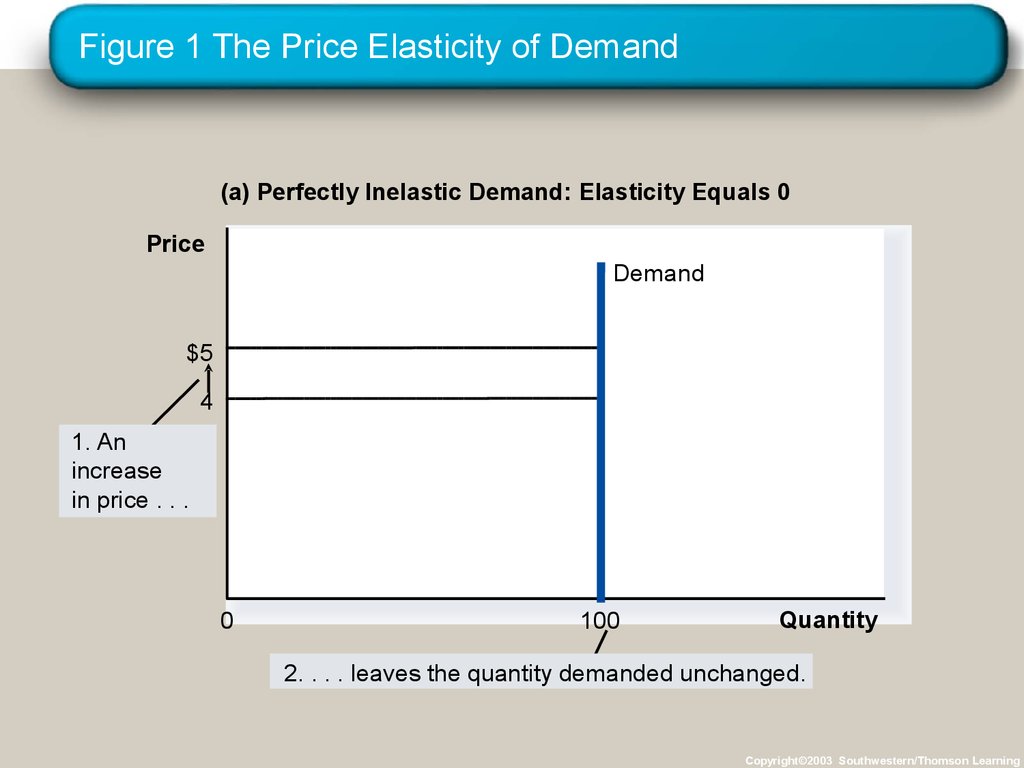
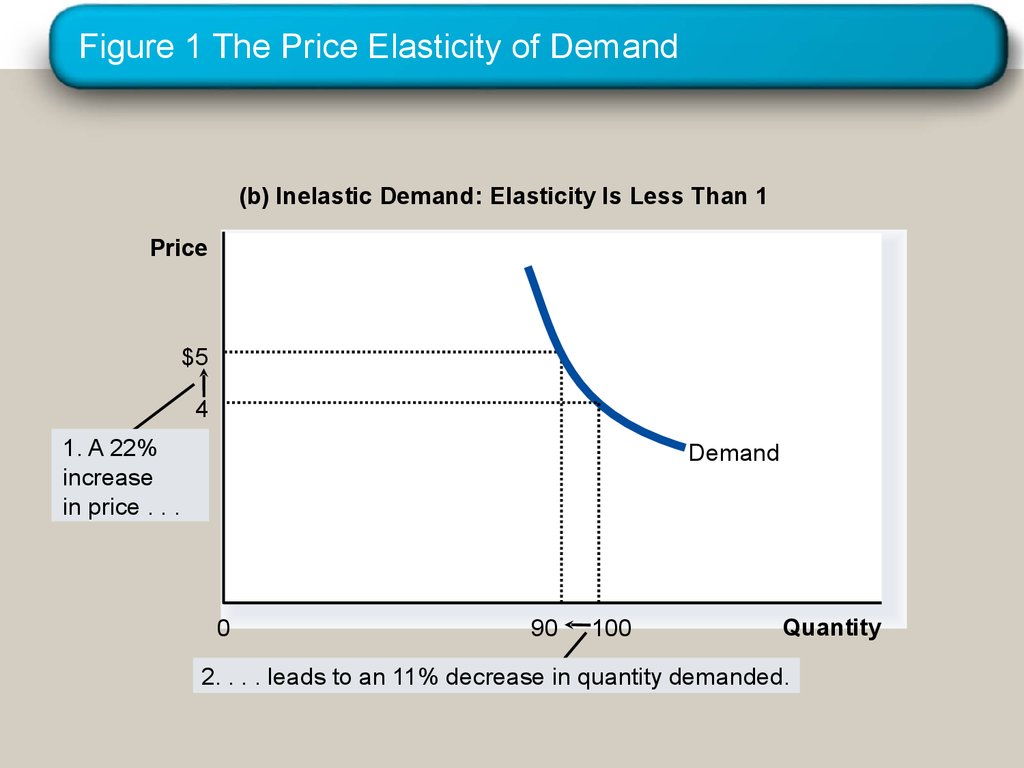
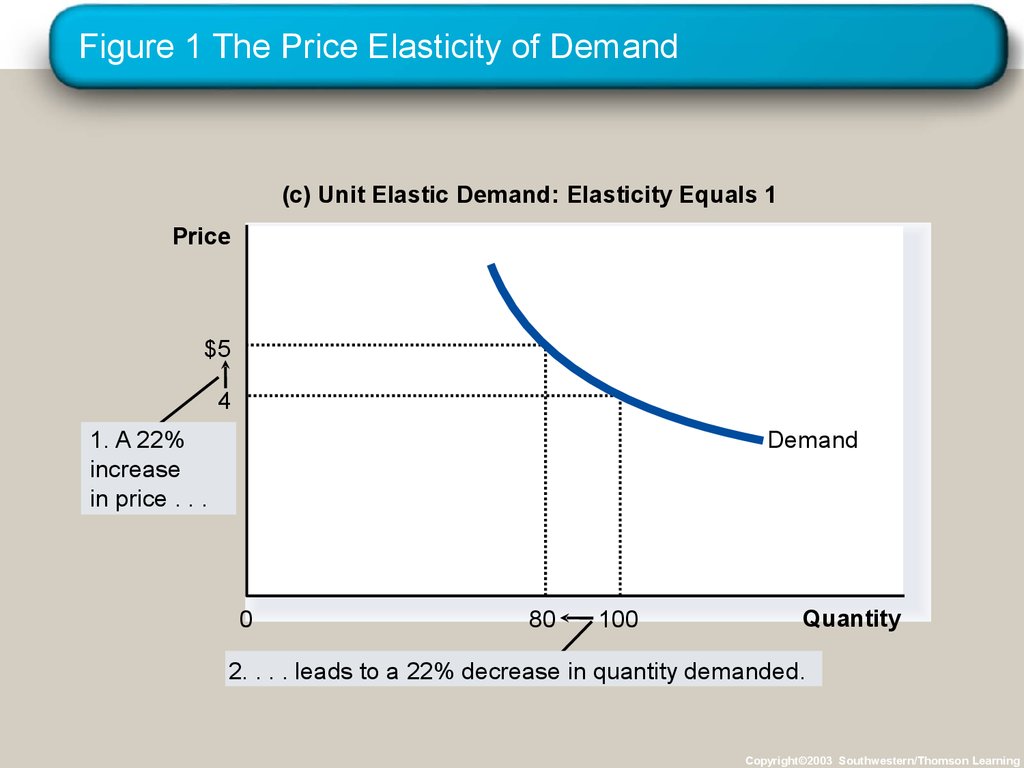

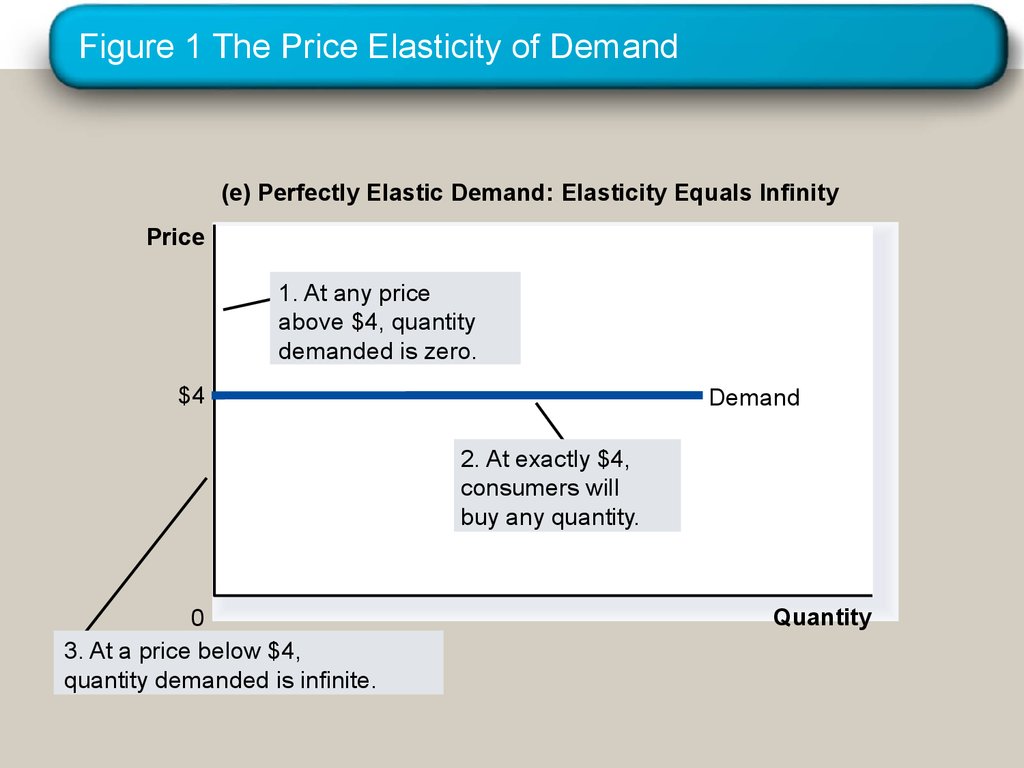
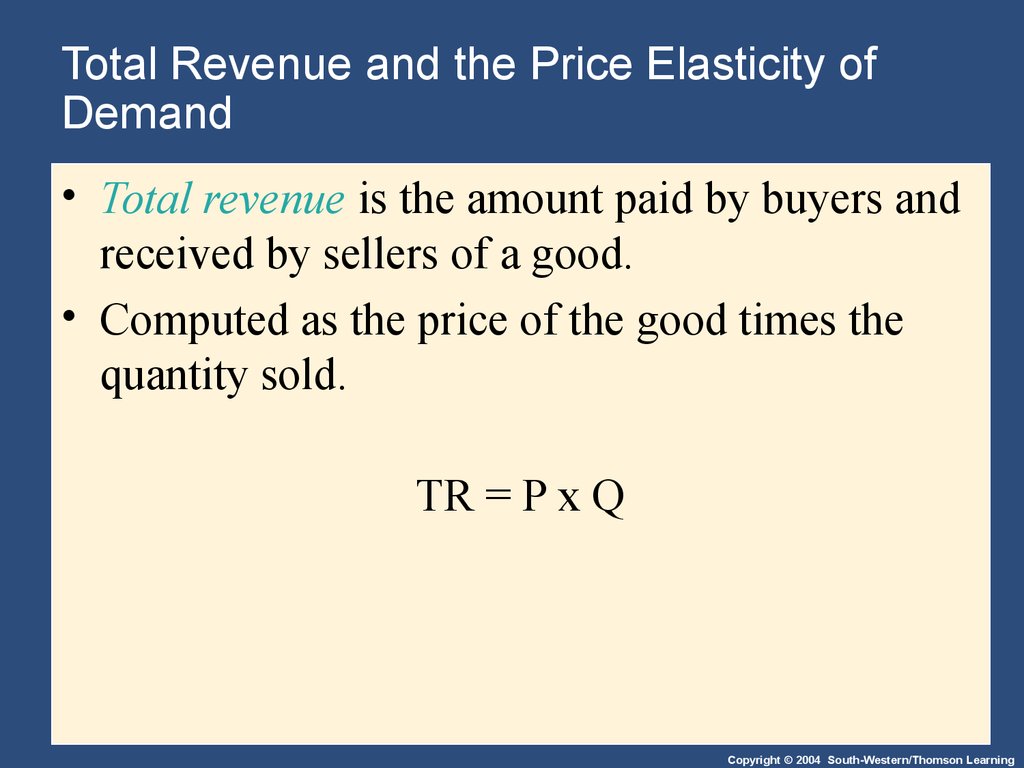
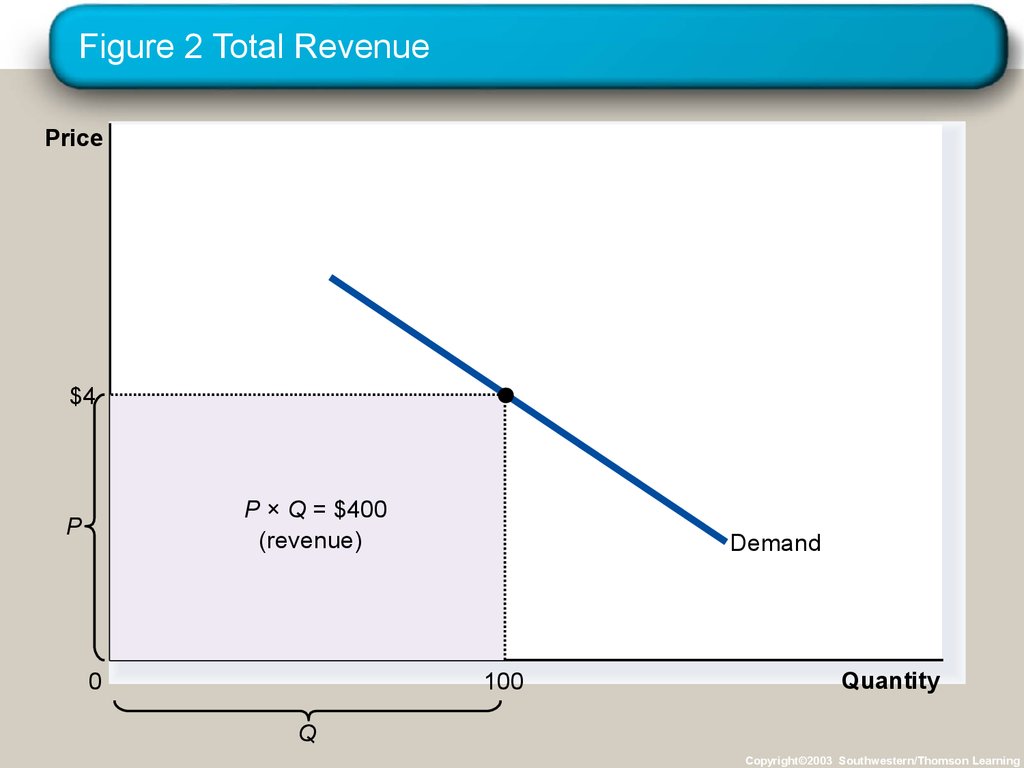
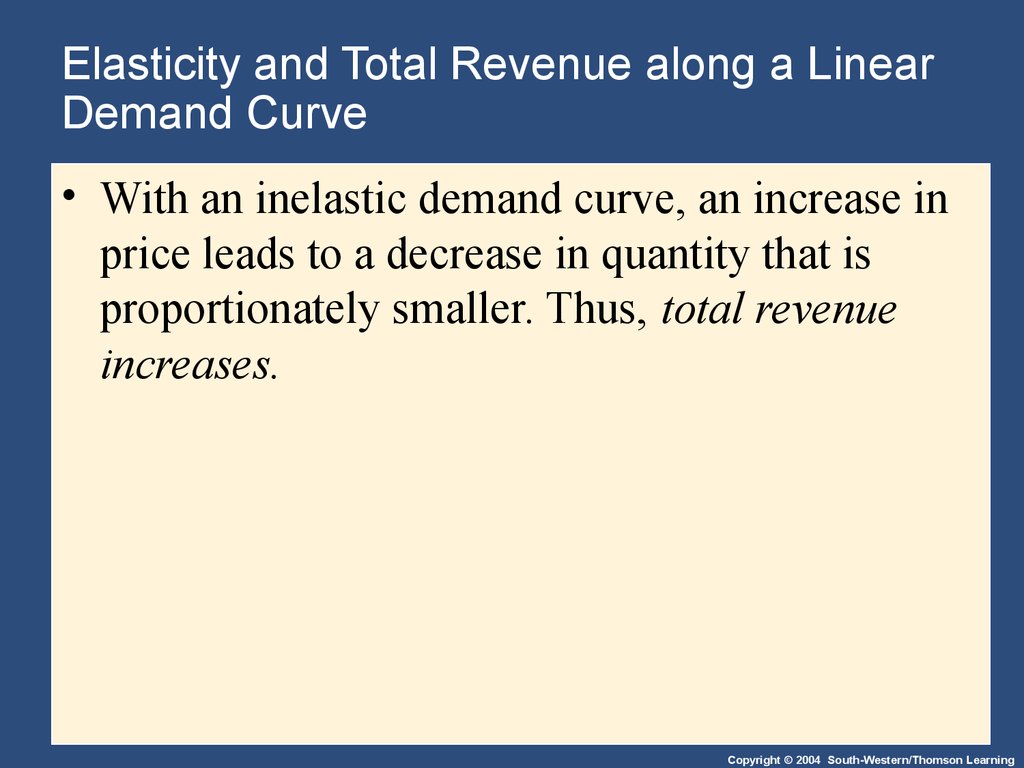

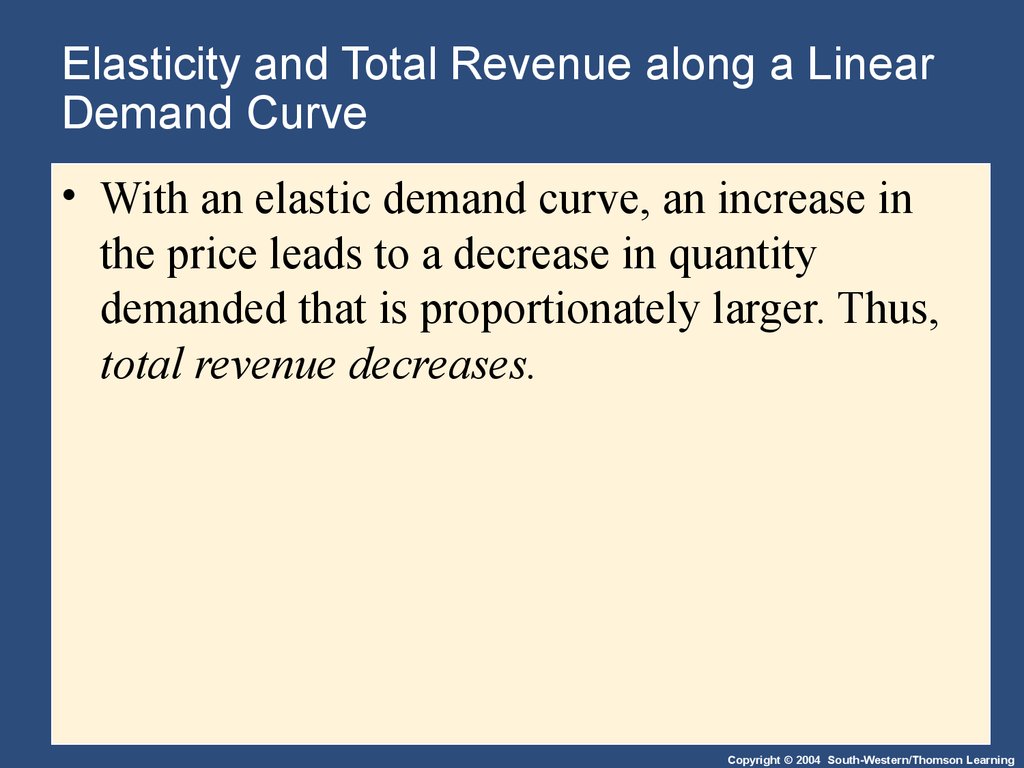
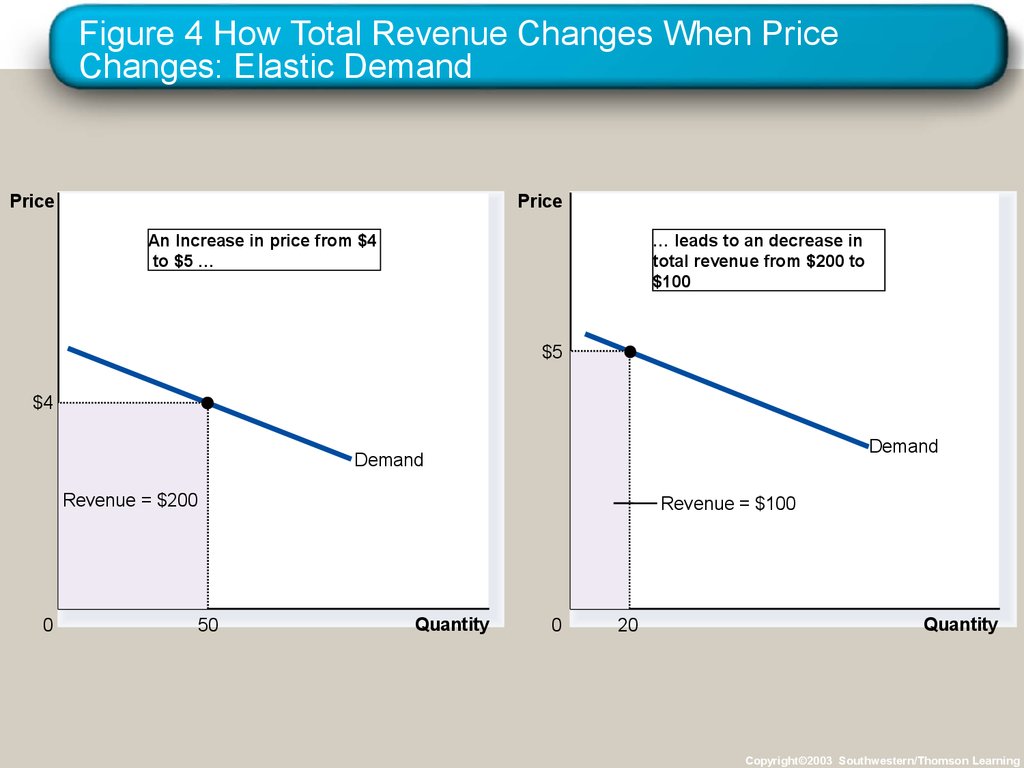



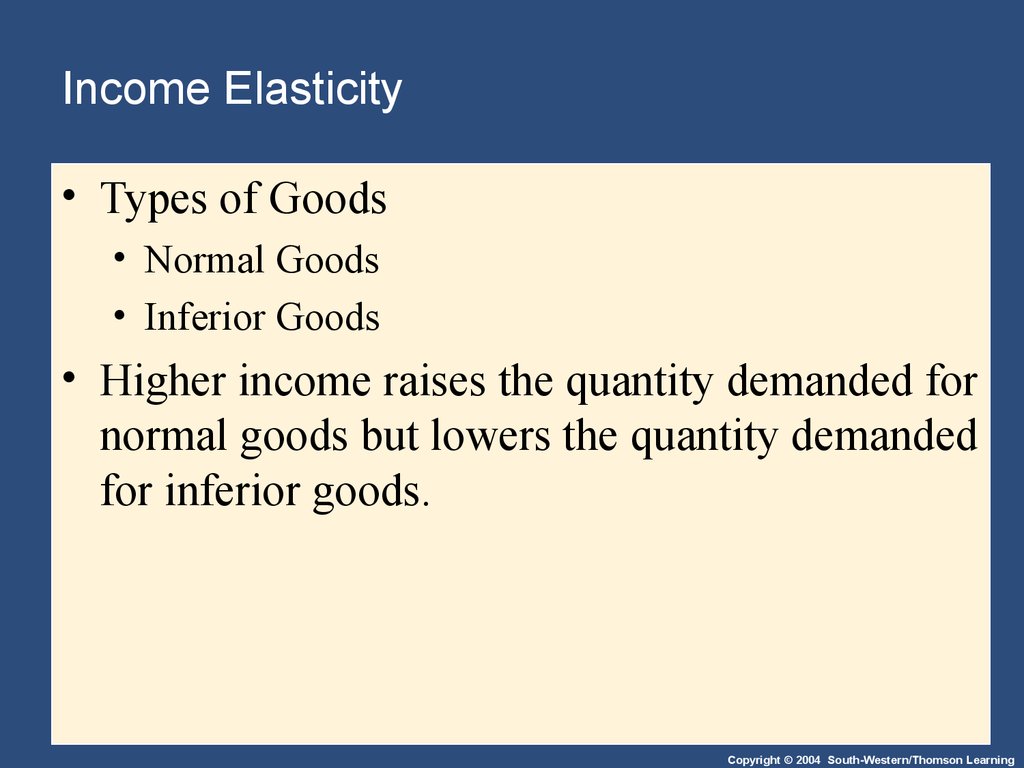


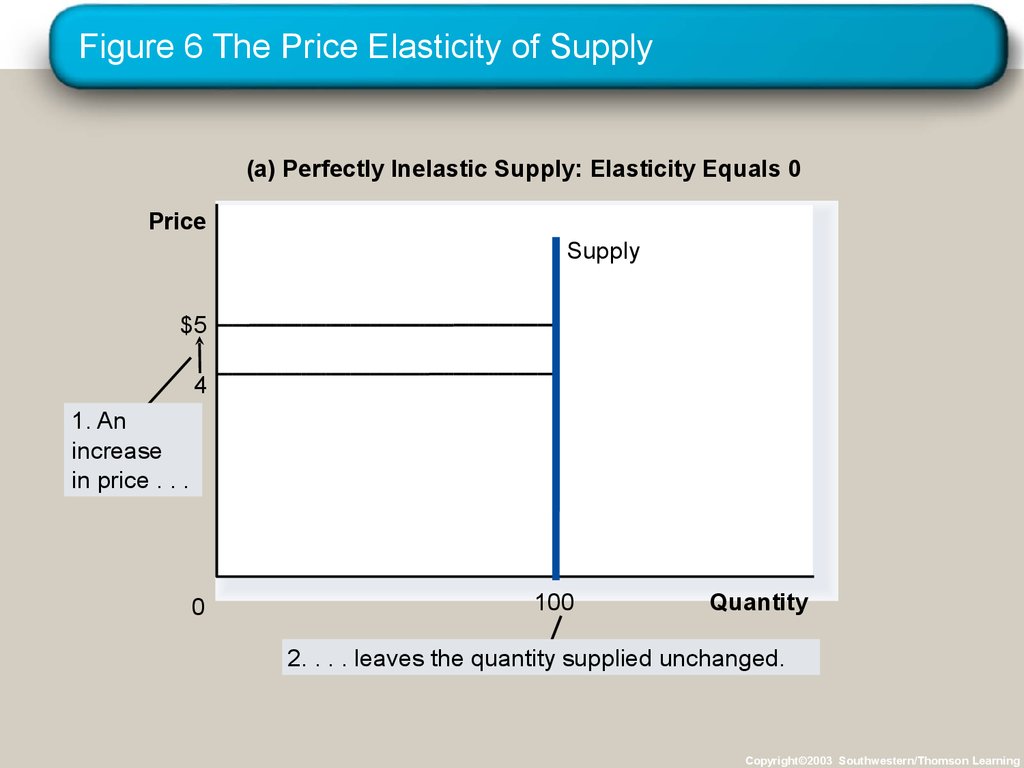
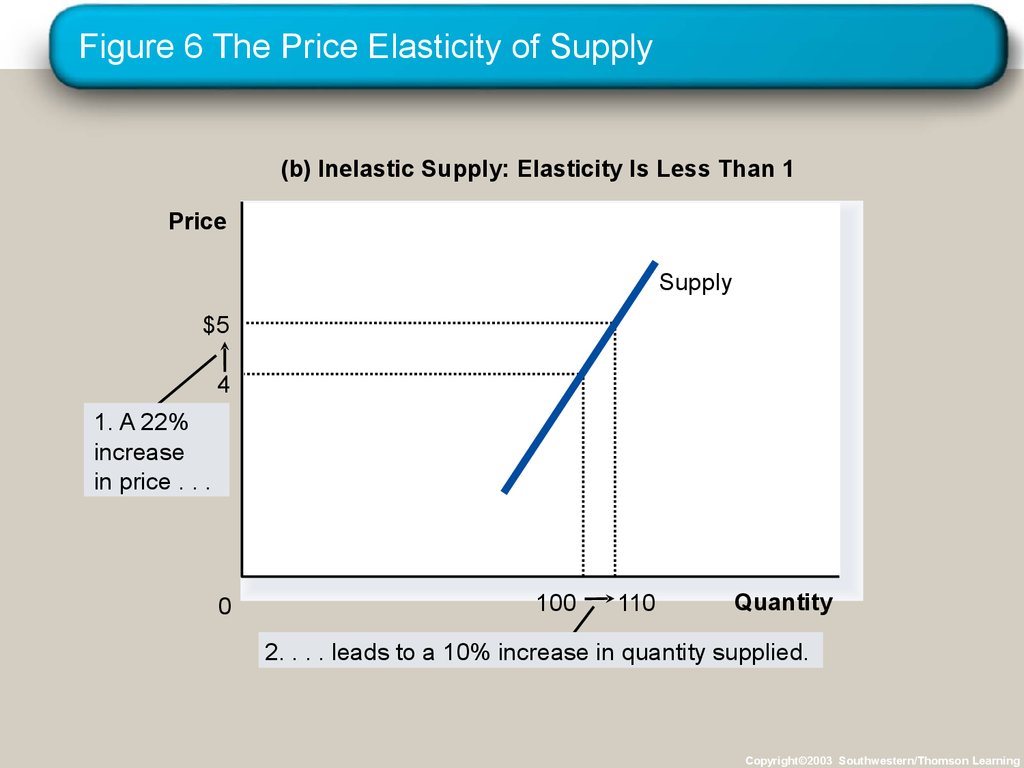
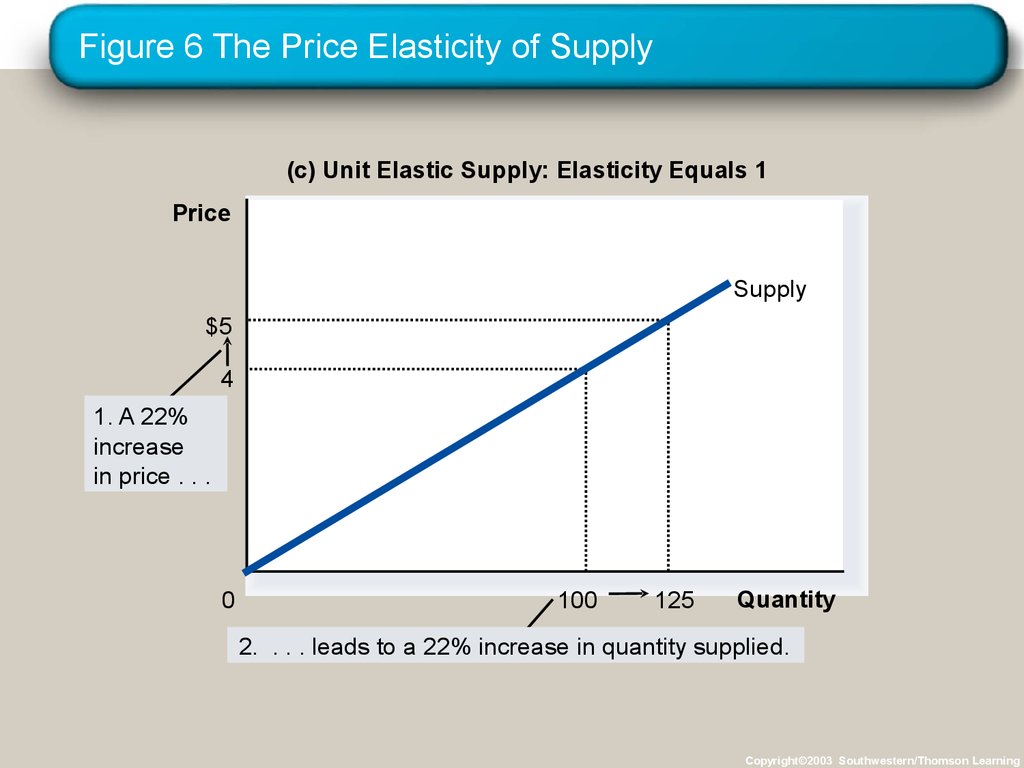
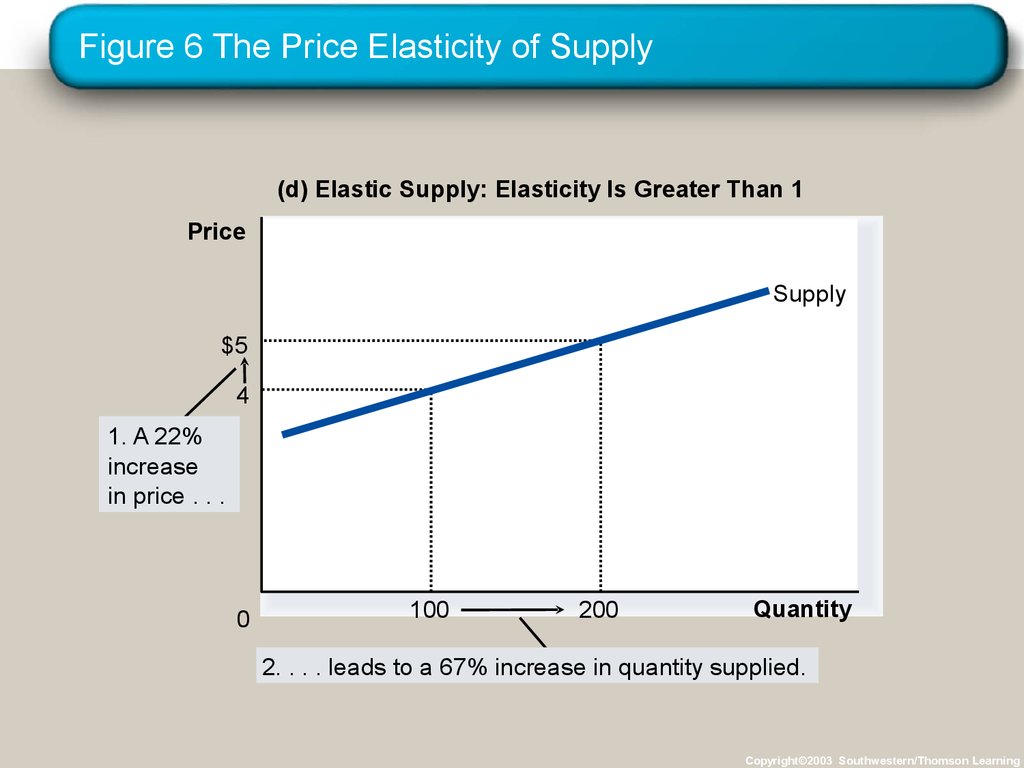
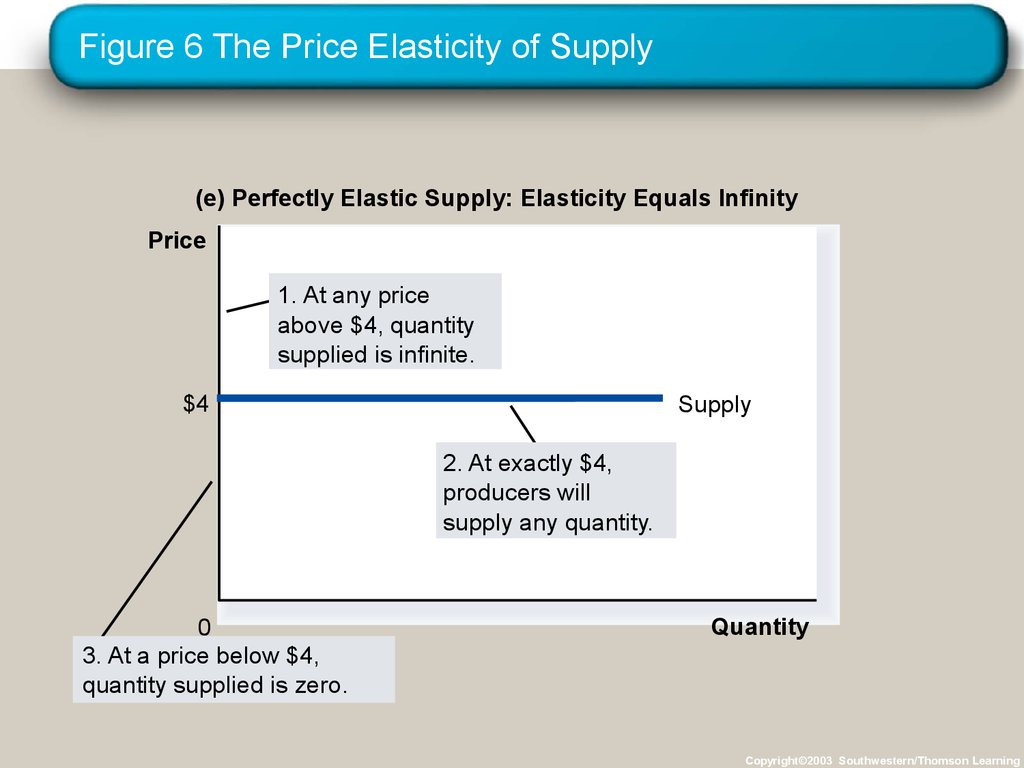
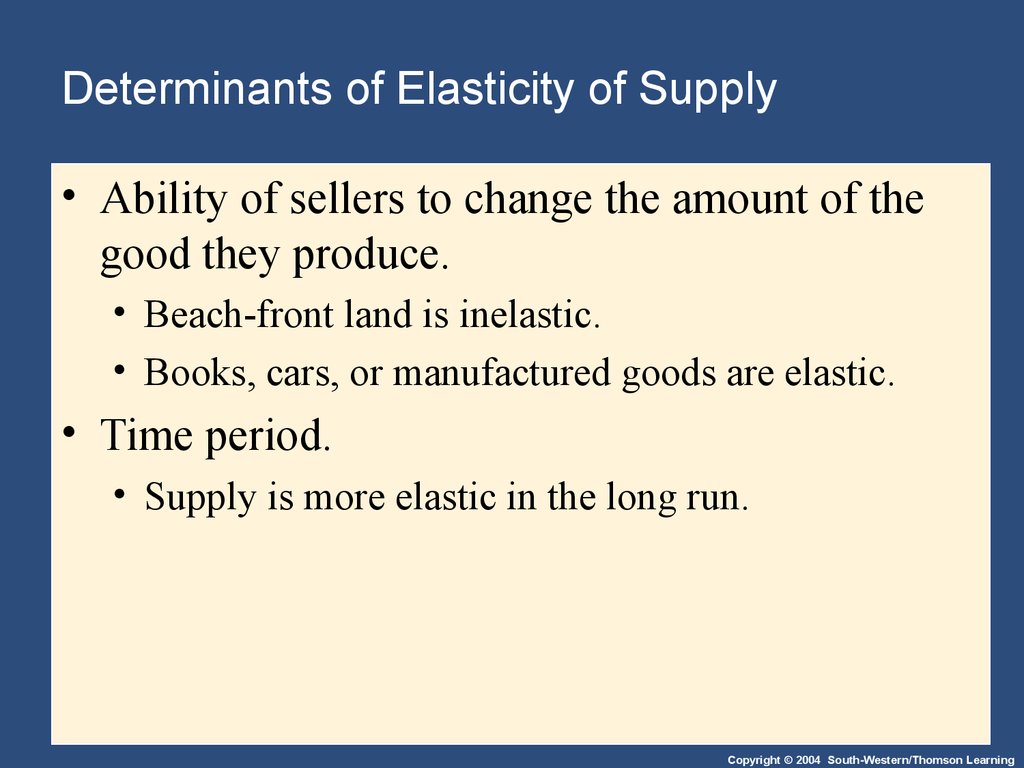


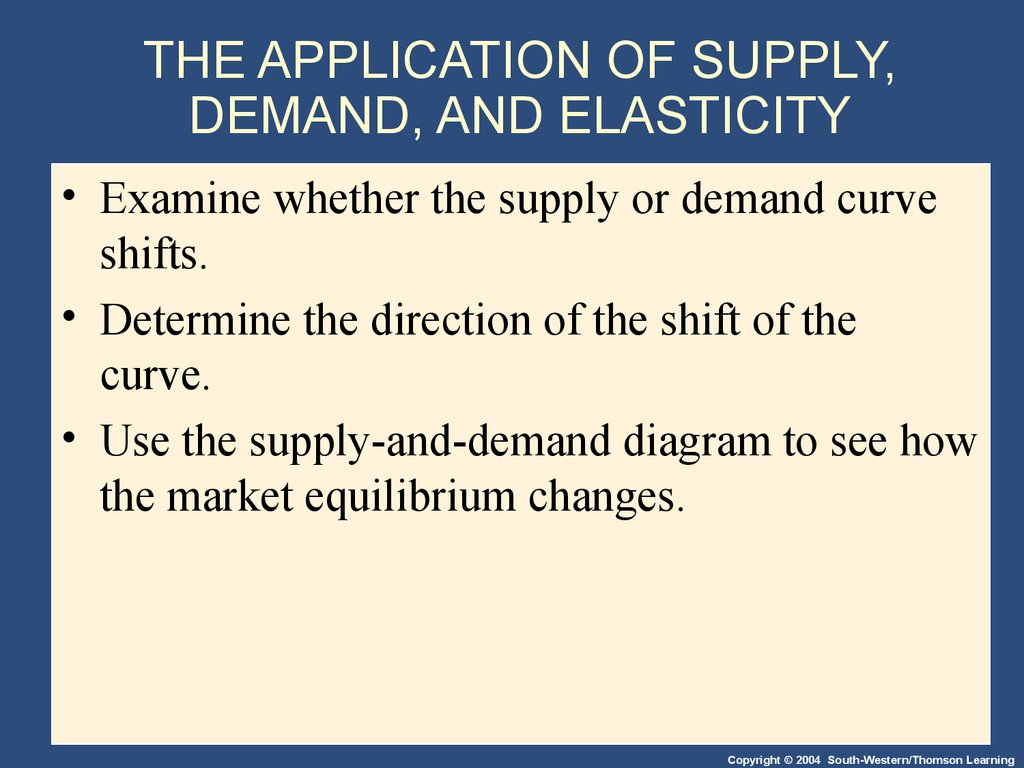
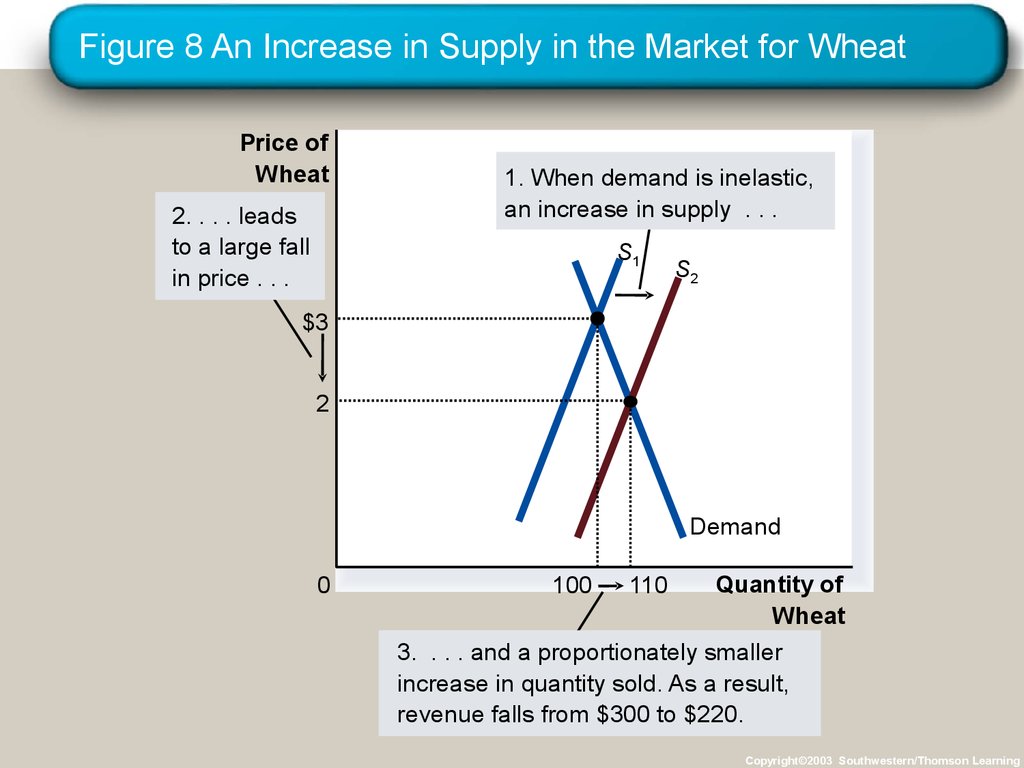
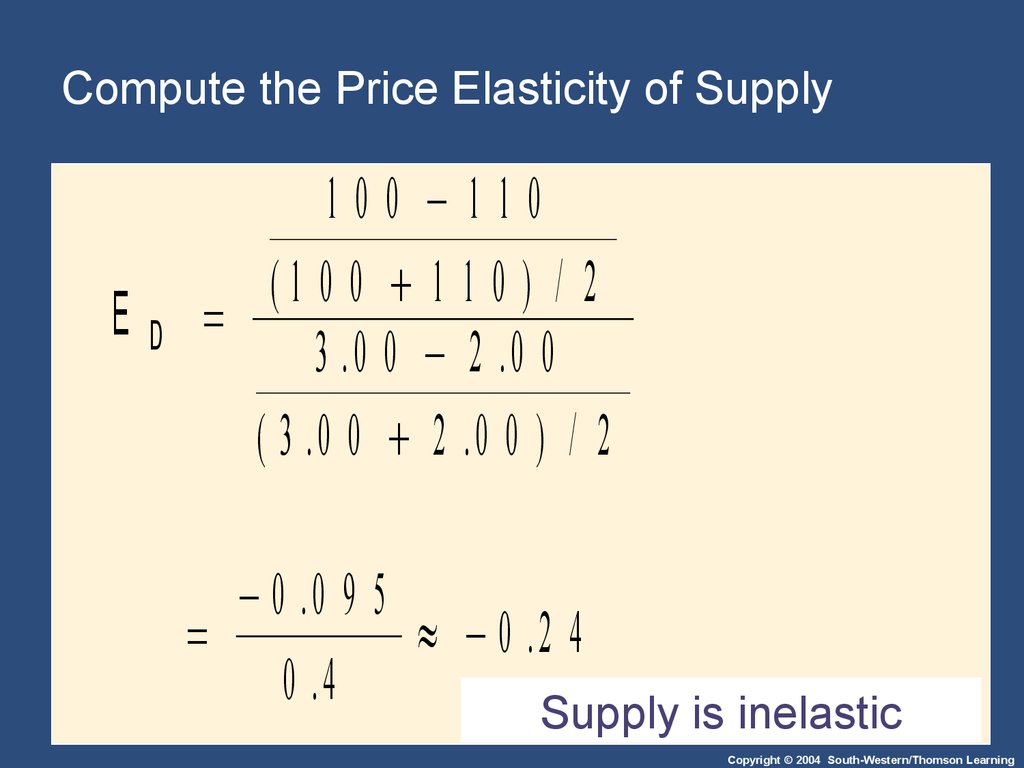
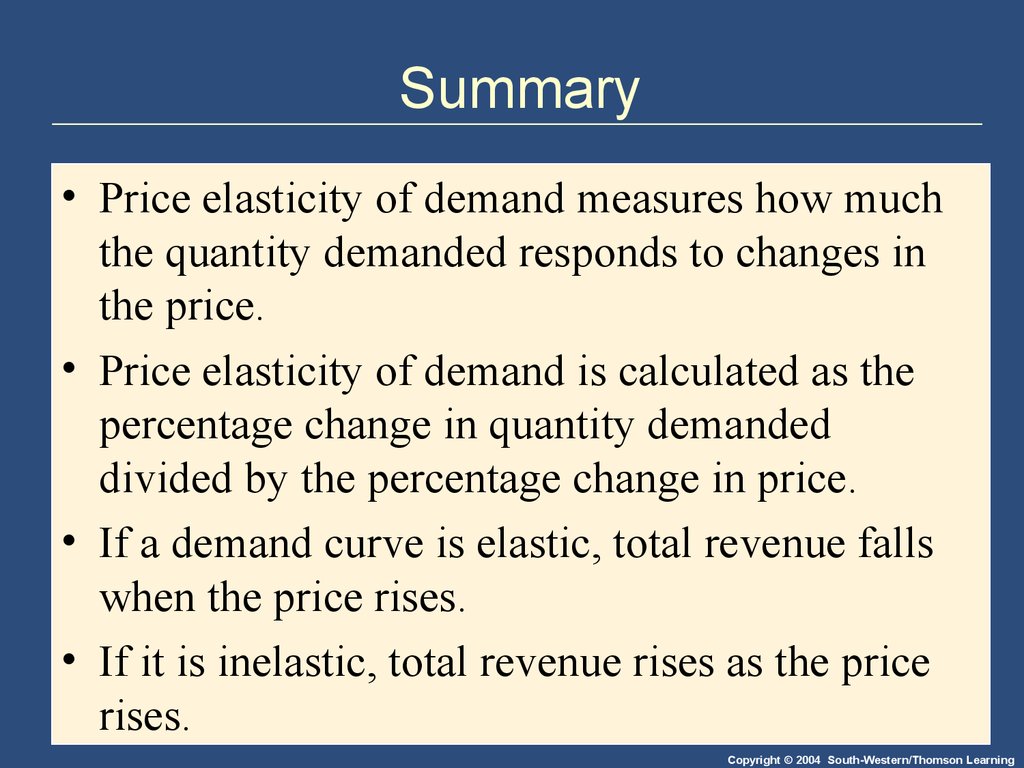
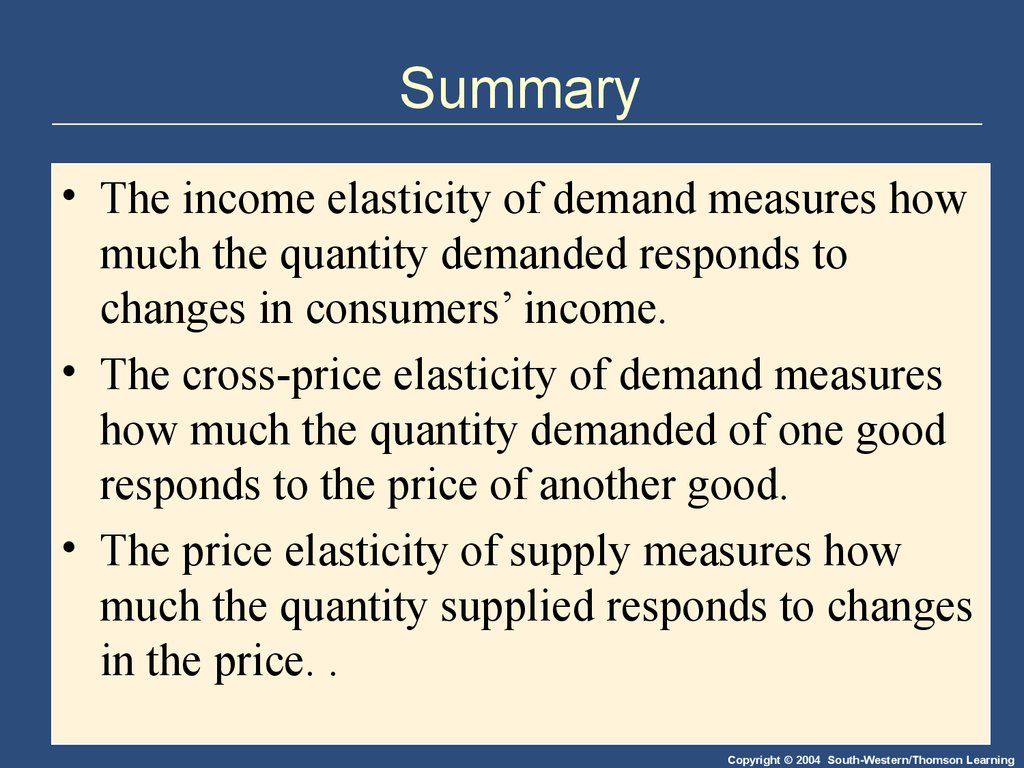

 economics
economics finance
finance








